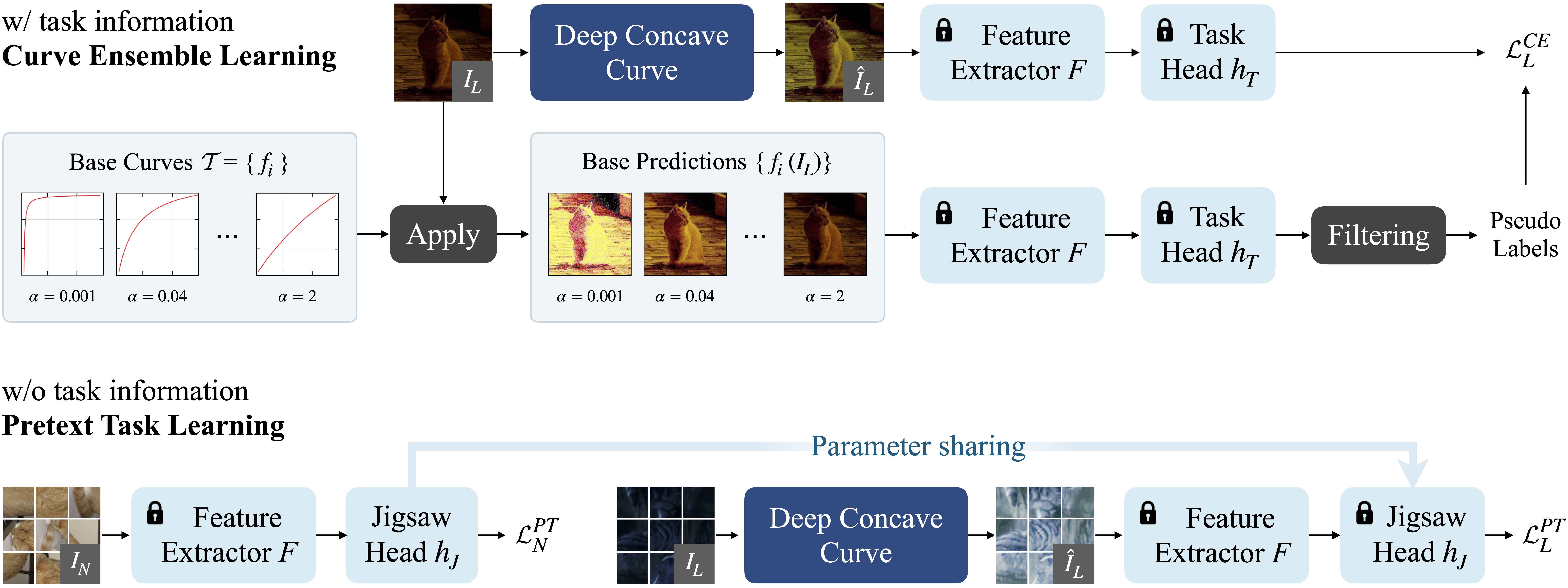Left: Comparison with the baseline model (trained with normal light data only) and previous state-of-the-art on multiple downstream tasks.
Right: Example nighttime face detection results. Our approach better enhances faces hidden in darkness, resulting in more accurate detection.




